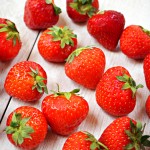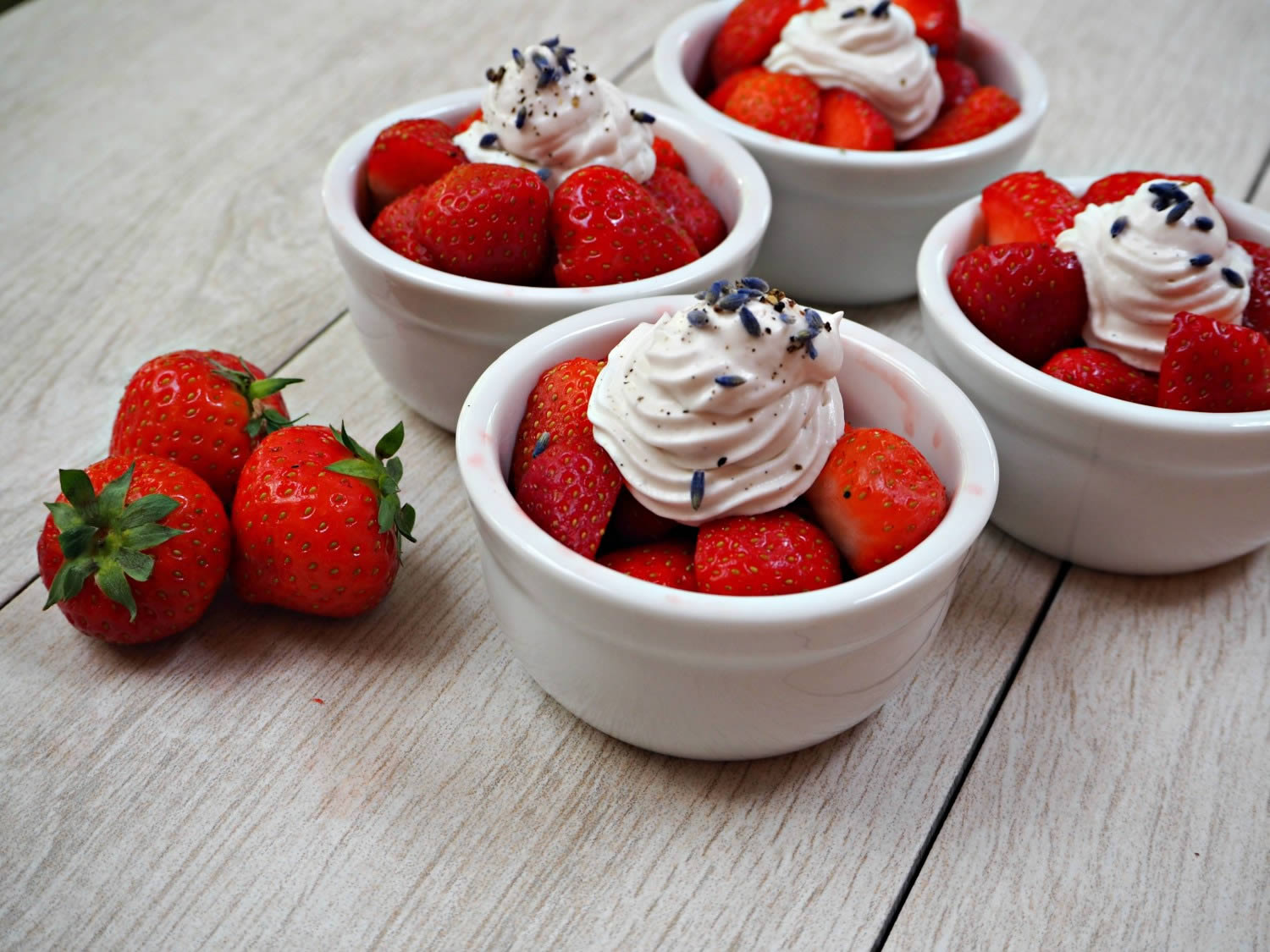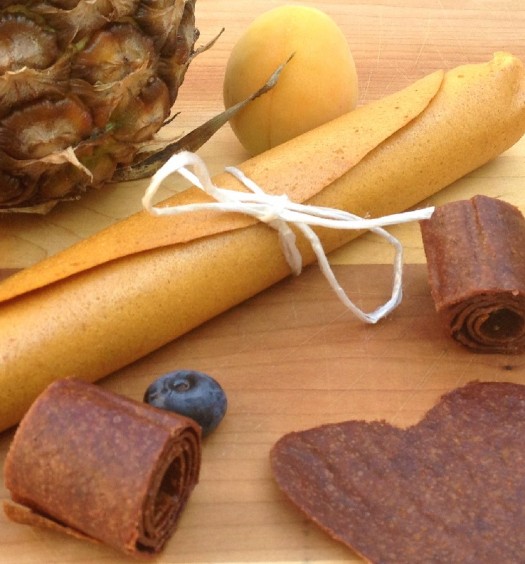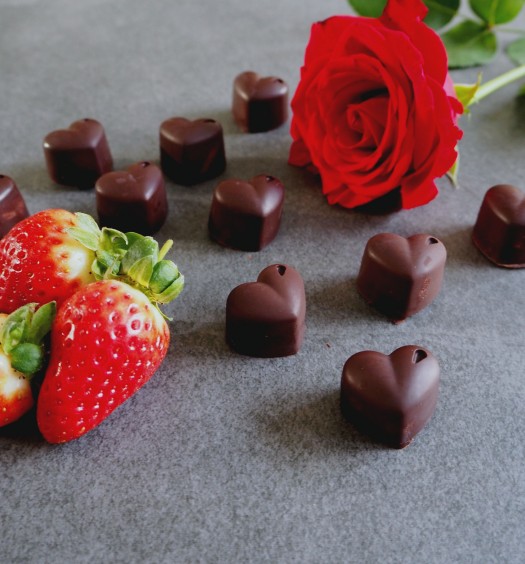why strawberries are a great fruit to eat
Strawberries and Cream
Strawberries and cream – I can’t think of a dessert that epitomises the British summer more – gorgeous weather with picnics, barbecues, tennis and bowls of vibrant red juicy strawberries. But strawberries don’t just taste great; they’re really good for you too. And add in our black pepper and lavender whipped coconut cream, and you’ve got a super-healthy, impressive looking dessert.
There are so many health benefits of strawberries I could honestly bore you rigid (I’m not joking) – but here are just a few:
- Strawberries are one of the top 3 vitamin C containing fruits that we eat raw (behind guava and papaya)
- Strawberries have a higher phytonutrient content and antioxidant capacity (i.e. are better for you) than most other fruits. Studies consistently link strawberries with reduced cardiovascular risk (lower blood pressure, cholesterol and inflammation), cancer protection, and better cognitive (brain) function.
- It’s easy to benefit from strawberries – just 3-4 servings a week (and it’s easy to eat a cup in one go) can lower the important inflammatory marker hs-CRP
- Phytonutrients in strawberries help to lower blood sugar levels – so if you (obviously accidentally!) eat a high sugar-releasing food, follow it with a cup of strawberries to naturally lessen the impact on glucose levels.
- Strawberries, like apples, are part of the rose family and share similar phytonutrients. This includes quercetin, which has anti-histamine effects and can relax the smooth bronchial muscles (useful for allergies and respiratory conditions). I normally recommend regularly chomping on apples to boost quercitin levels but in June apples are out of season, so nature has quite cleverly provided cousin strawberry to swap to instead.
How to get the most out of your strawberries
The beneficial phytonutrients in strawberries increase with ripening. Anthocyanins are phytonutrients in strawberries responsible for the gorgeous red colour. These phytonutrients attract animals to help seed dispersal, as well as protect the plant from stress.
 I can illustrate no better how this works than to highlight the on going animal/ripe strawberry battle in my garden. This basically means that the squirrels, rabbits and birds leave the berries alone when they’re green, when they’re pink, when they’re virtually red all over – and then frustratingly storm in and take them at the very moment they’re reddest, ripest and tastiest. The key message here (apart from net your fruit) is that strawberry nutrient content, sugar and flavour is highest when they are ripe. Animals time their strawberry eating perfectly – and so should we. Don’t buy under-ripe strawberries – they don’t ripen once picked, and you won’t be getting the best health or flavour benefits.
I can illustrate no better how this works than to highlight the on going animal/ripe strawberry battle in my garden. This basically means that the squirrels, rabbits and birds leave the berries alone when they’re green, when they’re pink, when they’re virtually red all over – and then frustratingly storm in and take them at the very moment they’re reddest, ripest and tastiest. The key message here (apart from net your fruit) is that strawberry nutrient content, sugar and flavour is highest when they are ripe. Animals time their strawberry eating perfectly – and so should we. Don’t buy under-ripe strawberries – they don’t ripen once picked, and you won’t be getting the best health or flavour benefits.
But nor do you want to be eating over-ripe strawberries – their antioxidant levels, including vitamin C, plummets dramatically really quickly.
Ripe strawberries can be stored in the fridge for a couple of days (freeze them for smoothies if you have too many). Alternatively you can sneakily bump up the nutrient content of ripe strawberries a little further; after picking, there’s a short window of a few days where strawberries continue to increase their flavour and antioxidant levels, if stored in a cool room (around 15°c – so not in a fridge).
Finally, consider buying organic strawberries – they’re higher in phytonutrients, but more importantly, the Environmental Working Group lists strawberries as number 4 on the most heavily sprayed crop list.
And if you’re super-interested in maxing out on the health benefits of strawberries, try growing your own:
Supermarket varieties are generally bred for storage – and are lower on smell, sugars and flavour. Varieties with a high aroma, higher sugar content, and better flavour (including alpine strawberries, mara de bois, marshmello and snow white) coincidentally correspond with a higher antioxidant content so it’s well worth growing your own.
Strawberries traditionally are grown through straw mulch – but ditch the straw and grow them through red plastic instead to significantly boost vitamin C, anthocyanins, sugar as well as size (up to 20% bigger).
 Our twist on traditional strawberries and cream is simple and tasty – using black pepper and lavender coconut cream:
Our twist on traditional strawberries and cream is simple and tasty – using black pepper and lavender coconut cream:
- Get hold of some great summer strawberries
- Make up some delicious whipped vanilla coconut cream (full of healthy, antimicrobial fats – so no guilt involved). See our recipe
- Add a grinding of black pepper to the cream – this enhances flavour, stimulates digestion and helpfully helps to burn body fat
- Add the flowers from a sprig of fresh or dried lavender to the cream. As well as general prettiness, lavender oil is antimicrobial and adds fabulous flavour
We hope you enjoy this blog post, let us know your thoughts in the comments below or on social media – we’re on Twitter, Facebook, Instagram and Pinterest. And don’t forget to sign up to our newsletter to receive a monthly update of our recipes, nutrition tips and expert advice.





